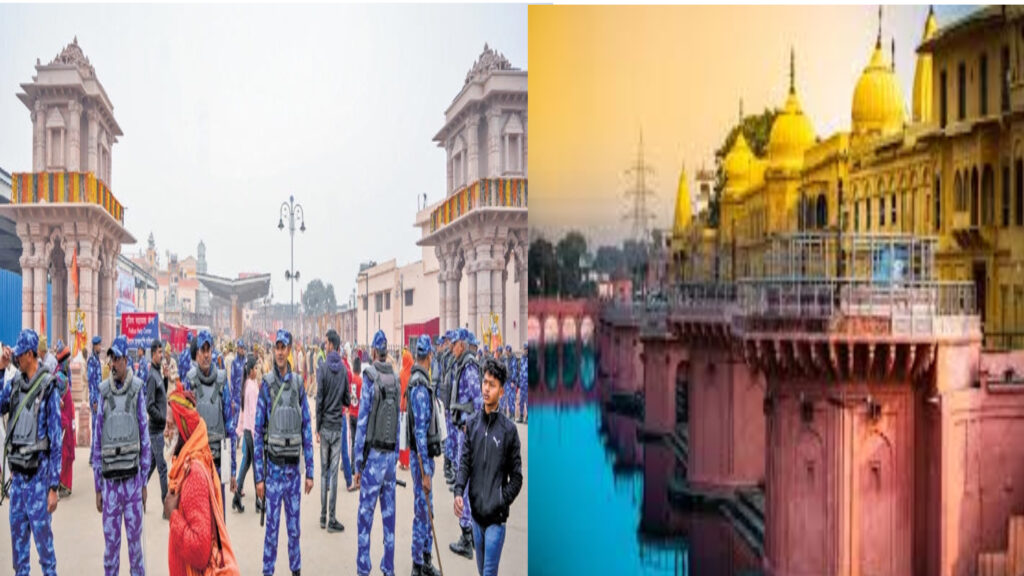The Uttar Pradesh government is poised to witness a substantial financial influx, with offerings to Ram Lalla exceeding Rs 3 crore within a day of consecration, owing to the overwhelming number of devotees flocking to Ayodhya. Projections from various national and international estimates suggest a potential boost to the state’s economy. A recent SBI Research paper indicates that, thanks to the Ram temple and the concerted efforts by both the state and central governments to position Ayodhya as a major tourist destination, tax collections in Uttar Pradesh could soar to Rs 5,000 crore in the fiscal year 2024-25.
This positive trend is seen as a significant stride toward Uttar Pradesh’s ambitious target of achieving a US$ 1 trillion economy. The report emphasizes Ayodhya’s pivotal role, anticipating substantial growth in tourism and estimating a potential addition of around Rs 4 lakh crore to the state’s economy this year.
Even global stock market research firm Jefferies predicts that Ayodhya could surpass renowned destinations like Vatican City and Mecca in terms of visitor numbers. Following the consecration, Ayodhya experienced an overwhelming influx, with over five lakh devotees having darshan of Ram Lalla in a single day and an equivalent number eagerly awaiting their turn.
The report forecasts that Ayodhya is poised to attract approximately five crore devotees annually, positioning itself as a prominent tourism destination not only within Uttar Pradesh but also on a national scale. Comparatively, the Tirupati Balaji shrine in Andhra Pradesh, one of the most prosperous in India, draws 2.5 crore devotees annually and generates an impressive annual revenue of Rs 1200 crore. Similarly, the Vaishno Devi shrine welcomes around 80 lakh visitors each year, contributing an annual revenue of Rs 500 crore. Even the iconic Taj Mahal, a major tourist destination, receives approximately 70 lakh visitors annually, yielding a revenue of Rs 1,000 crore.
A government official highlights the anticipation of over a lakh devotees visiting Ayodhya daily, with the potential to reach up to three lakh visitors per day. He further notes that if each person spends an estimated Rs 2,500 during their visit, the economy of Ayodhya could witness a substantial increase of Rs 25,000 crore. In response to this burgeoning economic potential, the Prime Minister has urged ministers to visit the temple in March.
This economic upswing is not only attributed to the religious significance of Ayodhya but also to the comprehensive initiatives undertaken by the state and central governments to develop Ayodhya as a major tourist hub. The consecration of the Ram temple has acted as a catalyst, drawing devotees and tourists alike. The meticulous planning and development strategies employed are expected to transform Ayodhya into a formidable contender in the tourism sector.
The surge in visitor numbers is not only indicative of the spiritual significance but also the economic impact of Ayodhya’s newfound prominence. As devotees flock to witness the consecration and pay their respects, Ayodhya is emerging as a tourism hotspot, with potential revenue streams that could rival or even surpass established global destinations.
The convergence of spiritual devotion and government initiatives has elevated Ayodhya to a beacon of economic prosperity. Projections indicate a substantial boost for Uttar Pradesh’s economy, inching it closer to the trillion-dollar milestone. Ayodhya’s ascent as a prominent tourism destination reflects the transformative impact of strategic planning and rich cultural heritage.
In conclusion, the confluence of religious devotion, government initiatives, and the consecration of the Ram temple has set Ayodhya on a trajectory of economic prosperity. The projections hint at a significant economic boost for Uttar Pradesh, potentially propelling it closer to its ambitious trillion-dollar economy target. Ayodhya’s rise as a major tourism destination not only within the state but on a national and global scale underscores the transformative impact of strategic planning and the cultural heritage of the region.

